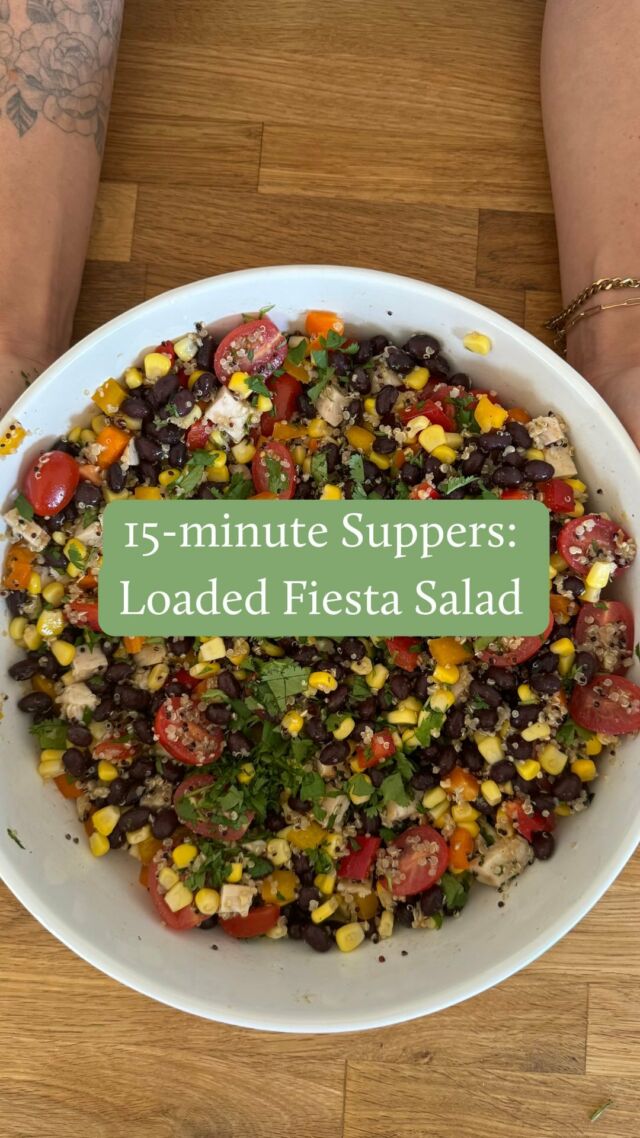There is NOTHING worse than feeling as though you’re failing at feeding your baby, toddler or child. As parents, ensuring our kids are well-nourished, growing and developing properly is just part of the gig! Right?? So, when your child refuses to eat or try new foods day-in and day-out, or worse, is also underweight—it can feel awful and defeating.

You’re always questioning whether your child has consumed enough calories and nutrients throughout the day, and if their doctor is concerned about their growth pattern, that worry you had might turn to panic. You may feel as though you need to get those calories in NO MATTER WHAT. This might mean short-order cooking, allowing your child to eat whenever and whatever they want, or introducing distractions such as the TV or iPad to increase the chances that they’ll actually eat. Pair this with a world-wide pandemic, and anxiety and overwhelm shoot through the roof. You’re not alone. And as a pediatric dietitian and mom of 3, I hear you, and I’m here to help.
Need personalized nutrition support?
Book an appointment with one of our pediatric dietitians today!
Kids come in all shapes and sizes—it’s important to have a good understanding of their growth.
Weight and height vary from child to child based on so many factors, including genetics, activity levels, eating habits and more. It’s really important to understand your child’s growth patterns (according to their WHO growth charts that their doctor uses to track their growth), and have a good sense of whether they are in fact underweight, or whether they’re just going through a picky eating phase, and are following their growth curve relatively steadily (the latter is usually the case). In fact, only about 4% of children are truly underweight. For children who are truly underweight, it may be a sign of a health problem and should be assessed by your child’s doctor. But if your child is generally following a regular growth pattern as they age and grow (whether that’s along the 5-10th percentile, or the 75-85th percentile), that’s great.

Resist the urge to pressure your child to eat – this could backfire big time
Although your intuition might be to hover over your child and spoon feed them until you’re SURE they’ve consumed an adequate amount, so that you can leave the table with some peace of mind (sound familiar?), it’s important not to pressure your child to eat. As much as you feel it’s important that your child eats their meal (or something!) NOW, it’s even more important that your child grows to have a healthy relationship with food, and a positive experience at the table.
To do this, it’s important to do your job as the feeder and set healthy mealtime boundaries (you choose the meal and snack foods, the timing and the place). It also means letting your child do their job as the eater, allowing them control over IF they eat and how much they eat. This is the cornerstone of Ellyn Satter’s Division of Responsibility in Feeding. If this concept is new to you, check out these posts: Feeding Your Toddler: What is Your Responsibility as Parent, and Setting Mealtime Rules and Boundaries for Your Child.
Get your kids into the kitchen:
Getting your kids involved in preparing and cooking meals can go a long way too. Kids who have a hand in making it, tend to eat more of it. If you’d like to know how to include your kids in the kitchen (depending on age, check out My Top Three Sanity Saving Tips For Including Your Kids in the Kitchen).

It’s not all about calories
Your first instinct is to GET THOSE CALORIES IN. And yes, calories matter when it comes to growth and development, but, so do nutrients. Pumping your child full of high calorie, nutrient-poor, ultra-processed foods might be easy, but it’s definitely not the answer. It can lead to nutrient deficiencies, negatively affect development, translate into poor health outcomes and perpetuate picky eating issues down the road.
If your child has a small appetite and is underweight, it’s important to make every bite count. What does that mean? Make sure their meals and snacks include foods that are highest in calories and nutrients, such as:
- Nuts and seeds
- Nut or seed butters
- Avocado
- Full-fat dairy such as cream and cheese
- Whole milk, cream or full-fat yogurt
- Coconut oil/cream
- Olive or avocado oil
For example, let’s say you are making your child toast. You could spread it with 25 calories from a tablespoon of hummus, 50 calories from a tablespoon of cream cheese, or 100 calories from a tablespoon of peanut butter. In this case, peanut butter is the best choice, because it provides the most calories for the same amount of food (and is really nutritious!). Some other high-calorie meals and snack ideas include:
- Oatmeal + cream or whole milk + nut or seed butter
- Guacamole + crackers
- Smoothies with avocado, cream, nut butters, whole milk, coconut milk and/or full-fat yogurt
- Trail mix—nuts, seeds, and dried fruit
- Pasta with olive oil, pesto, or a homemade cream sauce
The nice thing about these higher calorie options is that they’re also packed full of important nutrients needed for growth and development. For example, avocado contains not only lots of calories, but also healthy monounsaturated fats, Vitamin E, Vitamin K and Folate. Full-fat dairy foods such as cream, whole milk, cheese and yogurt contain not only calories and dietary fat, but also nutrients like protein, calcium and Vitamin A (just to name a few).

Let’s walk through some of the most important nutrients for growth and development:
Protein
Protein provides the building blocks for our child’s body, organs, and muscles and helps growth hormone levels. Foods such as meat, poultry, fish, eggs, dairy foods, beans, lentils, nuts, seeds and whole grains such as quinoa and farro are excellent sources of protein.
Examples of higher calorie protein foods include:
- Red meat
- Dark cuts of poultry
- Eggs
- Greek Yogurt
- Full fat yogurt
- Cheese
- Tofu
- Beans and other legumes
- Nuts and seeds
- Nutritional Yeast

Dietary fat
Foods that are high in dietary fat pack a punch calorie-wise. Per gram, dietary fat provides nine calories, whereas protein or carbohydrates only provide four calories per gram. Fats are also important for brain development and health, hormone function, and fat-soluble vitamin absorption (Vitamins like E, A, D, and K).
It’s important to include at least one source of dietary fat in each meal. Things like:
- Nuts and seeds or nut and seed butters
- Seeds or seed butters
- Full-fat dairy (cream, whole milk, cheese, yogurt, kefir)
- Avocado
- Olive/Olive Oil
- Fatty fish (salmon, tuna, sardines, mackerel)
- Coconut/Coconut Oil/Coconut Milk
- Mayonnaise

Calcium and Vitamin D
Both of these nutrients play a crucial role in healthy bone mineral development (and growth).
Examples of high calorie calcium and Vitamin D sources include:
- Full fat milk
- Yogurt
- Full fat cheese
- Salmon, Rainbow Trout, Herring, Mackerel
- Egg yolks
Other foods that are high in calcium (but not so much Vitamin D) are things like beans, tofu, tempeh, some vegetables and nuts and seeds.
Because there are so few food sources of Vitamin D, it’s suggested that all children (breastfed babies included) take a Vitamin D supplement of 400 International Units (IU) per day.

Iron
Iron is very important for proper growth and development, so it’s no surprise that iron deficiency can lead to a growth concerns. So, it’s really important to focus on iron (and vitamin C for absorption) for kids, especially those who are underweight. Examples of high calorie iron-rich foods are:
- Beef
- Chicken
- Turkey
- Beans
- Lentils
- Tofu
- Barley
- Fortified Oats
- Dried apricots
You can also cook with a cast-iron pan, which can increase the iron in meals cooked in them.

Bottom line? If you’re truly concerned that your child is failing to thrive, make sure to speak to your family doctor or pediatrician first. You can also seek one on one support from a registered dietitian. Chances are that your child is growing well according to their growth curve and that they’re going through a frustrating, but normal, picky eating phase. Regardless, your concern is valid.
Makes sure that you’re doing your job of setting healthy mealtime boundaries, minimizing pressure at the table and providing a nice variety of foods and nutrients at each meal and snack, and making those every bite count. Include foods that are high in calories but also high in nutrients that support proper growth and development.







![[AD] It’s Day 6 of my 15-Minute Supper Series and today we’re putting a delicious twist on a classic BLT to make it nourishing and meal-worthy 🤤
Make sure to comment “Spud” and I’ll send you my top dietitian tips for feeding your family on busy weeknights along with a huge list of meal ideas!
This pasta salad takes no time at all to throw together and has everything you need for a nourishing meal. I always make extra bacon for things like this, but if you don’t have any cooked bacon I find cooking it in the airfryer or stovetop the quickest 🥓
I find that this salad lasts 2-3 days in the fridge without getting too soggy. You can also add in fresh lettuce to crisp it up or add the dressing when you eat it.
I ordered all of my groceries from @spuddelivers, which always saves me time and effort and gives me peace of mind knowing that I’m using high-quality, local and sustainable ingredients. I love that they come straight to my door the day after ordering 🙌🏻
Let’s make it!
Ingredients:
* 10 slices bacon cooked and diced
* 12 ounces pasta cooked and cooled
* 1 cup homemade Ranch dressing
* 1 ½ cup baby tomatoes diced
* ½ avocado diced
* feta
* ⅓ cup red onion diced
* 1 cup romaine lettuce
* fresh parsley for garnish optional
Homemade ranch dressing:
* ¾ cup mayonnaise
* ½ cup sour cream or Greek yogurt
* ½ teaspoon dried chives
* ½ teaspoon dried parsley
* ½ teaspoon dried dill weed
* ¼ teaspoon garlic powder
* ¼ teaspoon onion powder
* Salt and pepper to taste
Make it:
1. Blend all Ranch dressing ingredients together in a small blender (or whisk by hand) and set aside.
2. In a large bowl assemble the pasta, tomatoes, avocado, cheese, red onion, lettuce and bacon.
3. Pour the dressing over and toss to combine.
4. Garnish with parsley and serve.
You are going to LOVE this meal-worthy salad, I promise!
Comment SPUD to receive my top dietitian-approved tips for feeding your family during the week, a long list of ideas, and a curated shopping list with all of the ingredients for this recipe + all of the other ideas that I share in this resource!
#sponsored #spuddelivers #15minutemeals #whatsfordinner #easymealideas #dietitianapproved](https://www.sarahremmer.com/wp-content/uploads/sb-instagram-feed-images/438745920_798281295514125_2547899647147267180_nfull.jpg)
Leave a Comment